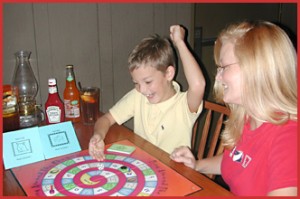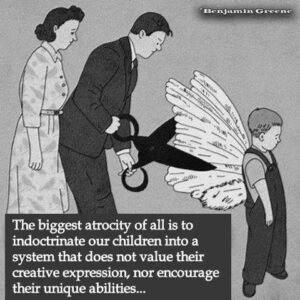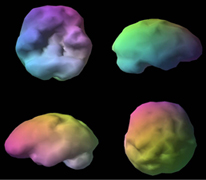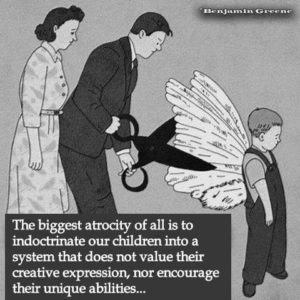Whole Brain Teaching
Help Your Child Learn
Are you interested in helping your child learn? Does it break your heart to see them struggling? I am going to tell you a true story that will help you to help your child.
True Story
In the 70s, I was given my first group of eight children that had not learned to read with the traditional method of teaching. That method was the “one size fits all” approach that plagues the public schools. That is because of Government Central Planning/ Government mandated curriculum and testing) has not allowed teachers to individualize the curriculum.
That group of 8 were all first graders from the same class. They were given to me shortly after Christmas. That is when teachers are suppose to decided which children they were going to fail. This decision is traditionally made by that time of year, because it allows teachers to prepare the other children for the year end test. She (the teacher) told me that I was to help these children learn to read. She continued to work with them on every subject except reading. So I knew that I was to be their babysitter for the remainder of the year. These eight children were considered dumb by their classmates. It was absolutely no fault of the teacher…It was just kids logical observations, and conclusions.
Help!
Seven were hands on learners, and one had a short term memory problem. I knew these kids, and their families, because I was in the “Follow Through Program . Thus I knew they were smart, and had the ability to learn. So I just could not give up on helping them by simply babysitting. Perhaps you can imagine how inadequate I felt. To be honest, I was scared. So I did the only thing I knew to do, and that was to pray for guidance. I asked a Higher Power to show me how to help these children. That very night, in a dream, the whole method was presented to me. So the next school day, I was well prepared. The children loved the game from my dream.
Parents often approach me with the same feelings I had. They are concerned that they are not capable of teaching their children phonetic reading. So I ask them, “Can you read?” When they say, “Yes”, my reply is: “Then you can teach your child to read. With the right tools it is a ton of fun, and much easier than you think.” We have even provided you free videos so you can make sure you are teaching the phonic sounds correctly. This is import for some children, and the first video explains the most commonly mispronounced sounds….Free Phonic Sounds Videos Here
Dumb…No!
One little boy (the tallest in the group) was advancing more slowly than the others. So one child declared, “He is dumb!” You can imagine how that child felt being called “dumb”. The tallest child lowered his eyes, and his face. He looked so sad, and devastated. It was heart breaking. Is that happening to your child?
I knew that he lived on a small farm, and could drive a tractor. So I quickly said, “Oh no, he is not dumb! Did you know that he can drive a tractor?” The other kids exclaimed, “He Can?” I said, “yes”! The little boy who thought he was the dumbest of the dumb, was suddenly aroused. He raised his face, and his blue eyes widened with surprise. From that day forward, he was considered the hero of the group, and, more importantly, he learned more quickly. In fact all seven of these children began learning faster in other subjects too. That was simply because they discovered that they were not dumb after all. A child’s attitude about themselves can affect their learning ability.
Team Building
Because there had been so much divisiveness and shame in the group, I told them: “once you all learn your first 8 sounds, we will read your first book together”. That day arrived rather quickly, and the kids were so excited (me too). We all giggled in delight as the reader rapped their arms around themselves in a hug, and giggled with joy. As a result they had become a team eager to help one-another.
Success!!!
Finally I went to the teacher, and told her that seven were reading at grade level, and were ready for her to put back in her reading groups. However, She did not believe me. So I was their only reading/ phonics teacher for the remainder of the year.
I did not know it then, but the method that came in that dream is whole brain teaching, which involves as many of the senses as possible. Scientific Studies show that with this method, children learn faster, retain more, and it improves the health of the brain. That means it is excellent for hands on learners, and for children with learning disabilities. I will tell you more about that below.
Traditional Method Fails Too Many Children
These 7 children didn’t learn with the traditional method (flash cards and workbooks), because they were “hands on learners”. Forty Five percent of children are hands on learners. With this game, their self-esteem was better, and their stress dissolved, because they were playing. I was teaching. But, in their mind, they were playing. Dr. Stanley explains why this method is so effective (A Vygotskian Perspective) in the video below. Whole brain teaching helps children learn, and studies show that it even reduces stress, and improves the health of the brain.
To the teacher’s surprise, seven of my group passed the end of the year reading test, and were moved on to second grade. Over the years I repeated that success with children from kindergarten through sixth grade, using that very same method. Adults began asking me to teach them how to help their children who were struggling with their reading/ phonics. So my daughter, some home school families, a game designer, and an English college professor, helped me to develop the learning game Ring Around The Phonics. It is now easy for you to help your child, because of their loving efforts. (Customers can buy this product on our website).
I am excited to tell you this: To my surprise other educators began to show me that they were using it to help children learn:
- Phonics, Reading and Blending of Sounds
- Comprehension, Communication and Listening Skills
- Spelling and Vocabulary
- Foreign Languages
- All sorts of language arts subjects
- To learn more about the game, click here. Be sure to check out the savings with our value pack click here (The fourth purchasing option).
Over the years, I have been blessed with that dream. Because I have been able to help many more children (home school and public school) using that very game, which we make available to you on this site..
Now You Can Help Your Child learn, Even If The Teacher says Otherwise
Don’t let your child suffer any longer. You can help your child with Whole Brain Teaching… Help them learn to read, the easy and fun way, as have many others just like you.
Nile Stanley, Ph.D. reading professor, University of North Florida
Dr. Stanley explains why this method is so effective (A Vygotskian Perspective).
Note: Studies show that when children discover their natural talents (that which lights their fire), they will learn previously difficult subjects just to be able to do that which sparks them. Read more about that on our blog.
In 2005, more children were helped:
See the letter below, and hear another true story at this link: Most Common in Poor Readers
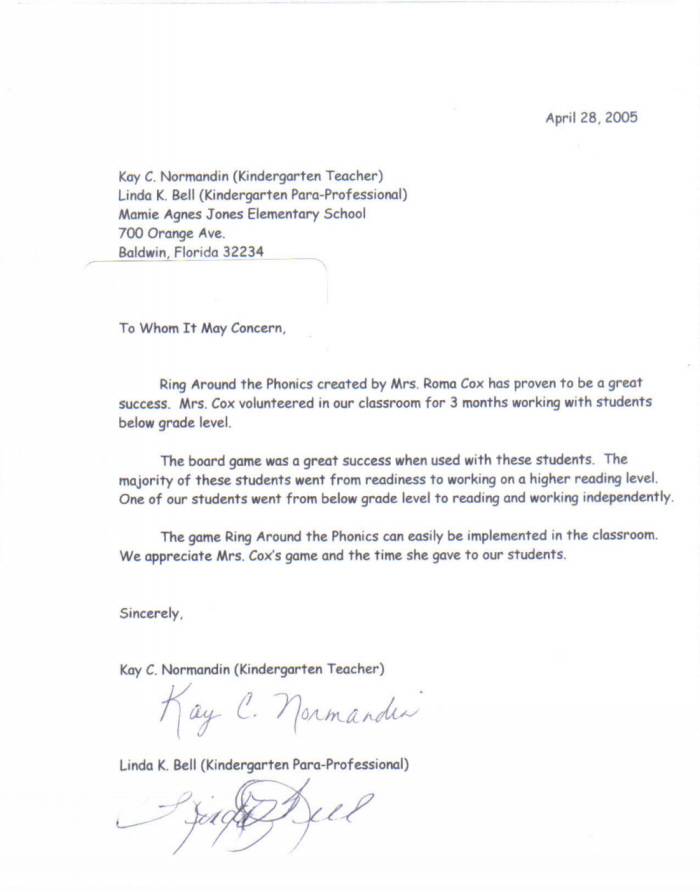
Homeschooling provides more of an opportunity to do healthy whole brain teaching than is possible in today’s public schools.
Suicides, depression, and violence are on the increase in our public schools.
We have only recently began to research the causes of suicides, depression and violence in our public schools. The findings are very revealing, and the media is not telling parents. Here you will arm yourself with information to help the children.
A young boy (only a sophomore) recently committed suicide. He left behind a very telling suicide note. The note explained that school pressures caused his decision to end his life. This young boy is but one of many. It has given pause to the entire community, including school leaders and parents.
How did we get here?
We got here when we opened every conversation with our high school children about futures, goals, and achievements with the words: “I just want you to succeed (make money).” We should be using the words, “I just want you to develop your individual (God given- if you will) talents ….to be who you were meant to be. ”
One Size does not fit all: Suicide Depression and Violence
I worked as a professional tutor in the public school system. Many very bright hands on learners, and analytical thinkers do not learn from the “One Size Fits All” method now mandated in the public school system. The conventional method (workbooks and lectures) doesn’t work for about 40% of the children. Many bright individuals, who don’t learn with this method, are treated like they are dumb. As a result, they often feel ashamed, isolated, or worthless. Is it any wonder that so many are depressed, and suicidal?
Simply by using hands on learning methods (Whole Brain Teaching like Ring Around The Phonics), they quickly and easily learn. These children do not need to be drugged or left behind.
The transformation is amazing once they discover they can learn…that they are not dumb. Because their self esteem improves, they no longer wish to end their lives. Furthermore: drugs do not teach the behaviors that will help those diagnosed with ADD / ADHD function in the world and workplace as they grow older.”
We are overly concerned about “success” (making money in the workforce). But we are not concerned enough about developing a child’s natural individual talents. I witnessed countless teachers who deeply cared about the children, have their hands tied by a bureaucracy that cares more about money than they do the individual child.
Misdiagnoses can cause suicide, depression and violence.
Jacob Barnett was accurately diagnosed with moderate to severe autism. However, doctors told his parents that the boy would likely never talk or read. Furthermore, Jacob’s parents were told he would probably never be unable to independently manage basic daily activities like tying his shoe laces.
But they were sorely, extraordinarily mistaken.
Today, Barnett — now 14 — is a Master’s student, on his way to earning a PhD in quantum physics. The teen has an IQ of 170. He may one day win the Nobel Prize. (Source: https://www.huffingtonpost.com/2013/05/11/jacob-barnett-autistic-14-year-old-nobel-prize_n_3254920.html )
Albert Einstein’s story is very similar. Gandhi failed at the career he was educated for, but he united a Nation.
How Did We Get Here?
Our children are suffering from depression, suicidal tendencies, violence, and anxiety. But we allow the news media and emotions to divide us with gun issues. The media has a political agenda that ignores real problems and solutions.
Use Whole Brain teaching to improve a child’s brain health and ability to learn: How to Help Your Child Learn
You may also be interested in:
 Phonics Reading Games Can Improve Brain Health, And Ability To Learn?
Phonics Reading Games Can Improve Brain Health, And Ability To Learn?
Studies show that whole brain teaching (example: Ring Around The Phonics) improves brain health, and the ability to learn. Yet, many schools are failing children, because They are not using the Scientific research. Many educators now understand that each person prefers different learning (and teaching) styles. However learning styles are not written in stone. One can actually strengthen the less dominant learning (and teaching) styles. Why is this important?
According to the latest brain research: Learning is as natural as breathing. It is possible to either weaken or strengthen a child’s natural desire and ability to learn in different life situations.
Researchers, using brain-imaging technologies, have been able to find the key areas of the brain responsible for each learning style. They are also able to see the actual brain improvements.
Different learning styles located in the brain:
1. Visual/ spatial learners prefer using pictures, images, and spatial understanding. This style develops the occipital lobes at the back of the brain. Both the occipital and parietal lobes manage spatial orientation.
2. Aural learners (auditory – musical) prefer using sound and music. They have developed the temporal portion of the brain. The right temporal lobe is especially important for music.
3. Verbal learners prefer using words, both in speech and writing. This learning style is managed within the temporal and frontal lobes. Two areas called the Broca’s and Wernicke’s areas (in the left hemisphere of the temporal and frontal lobes.) are especially important.
4. Physical (Kinesthetic) learners prefer using their body (hands and the sense of touch). These children have a well-developed cerebellum and motor cortex which is at the back of the frontal lobe.
5. Logical learners prefer logic reasoning and systems. Studies show that these children have well-developed parietal lobes, especially on the left side of the brain.
6. Social learners prefer learning in groups, or with other people. These children have developed the temporal lobes.
7. Solitary learners prefer working alone, and using self-study. The frontal and parietal lobes, and the limbic system are very active with this style.
Important Studies On The Frontal Lobe
The frontal lobes play a very important role in regulating our emotional sates and judgments. It is the critical thinker…. the part of the brain that thinks about the consequences of an action. It is not fully developed until the mid 20s. Children who are hindered in developing this part of the brain, can exhibit serious emotional problems.
It was once believed that if you encouraged a person to express their angry emotions, it would “get it out / process it”. However a 15 year study of prisoners commissioned by the government, revealed something very different. If you got an angry prisoner to express his anger, he became angrier. It also revealed that if you educated him, you got an educated criminal….he did not rip you off with a gun anymore, he ripped you of with a computer.
So what did work in that 15 year study?
Developing the frontal lobe worked. How? It was discovered that even though we all have some degree of false ideas, criminals have more. For example: criminals (like many children) responded, “Well everyone is doing it”. The response from the psychologist was, “Well it depends on who your friends are. Mine aren’t doing those things.” In other words, to develop the critical thinking (frontal lobe). It means replacing a dysfunctional idea, with a functional one (“As A Man Thinketh”). A healthy frontal lobe helps one to override the execution of automatic behaviors. It overrides potentially destructive illegal or immoral behaviors that are sparked by emotional biases
Use it or lose it.
While it is highly important to provide plenty of opportunity to reach each child through their preferred learning style, it is equally important to exercise the whole brain…use it or lose it. Research shows that by involving more of the brain during the learning process, children remember and retain more of what they learn. According to Dr. Amen, whole brain teaching even improves the health of the brain (use it, or lose it). Help your child with games like Ring Around The Phonics.
Order the game Here using PayPal (be sure to check out the savings on our Value Pack). You can also order the game on Amazon here.
Or read more:
SPECT Scan Of A Healthy Brain
(Source http://www.amenclinics.com/ )
(To see a picture of the brain showing the different parts, and to learn more about their functions: http://www.webmd.com/brain/picture-of-the-brain )
Public Schools:
The public school system uses mainly the “conventional method” of teaching: workbooks, lectures, flash cards, reading and multiple choice — sit down a desk type work. Not only does this not improve the health of the different parts of the brain, but it is a disaster for some children. For example: Very bright “hands on learners” (38 % of the population) are often labeled as slow learners, problem children, ADHD, or called dumb by their class mates. why? Because the conventional method does not work for them. As a result, they often become convinced that “something is wrong with them“. However give these children a hands experience (like our phonics reading game), and they shine.
Applications For Whole Brain Health And Development
So it has become evident that it is important not to just develop parts of the brain, but to develop the whole brain. Studies show that with whole brain teaching (involving as many of the senses as possible), children learn faster, and retain more. Dropout rates decrease by 90%, and the health of the brain is improved.
1. Frontal Lobe Learning ignored in today’s classroom
Emotions simply exist; we don’t learn them in the same way we learn telephone numbers, and we can’t easily change them. But we should not ignore them. Children can learn how and when to use rational processes to override their negative emotions, or to hold them in check by developing the frontal lobe area of the brain…learning that there are consequences to one’s actions. This part of the brain is almost totally ignored in today’s classroom setting.
2. Too much stress can cause learning disabilities
Learning is enhanced by challenge and inhibited by threat.
Emotionally stressful environments (for the educator and the student) are counterproductive because they can reduce children’s ability to learn. http://www.mayoclinic.org/stress/art-20046037
3. Understanding each individual – One size does not fit all
individual – One size does not fit all
Learning is influenced by the natural development of the body and brain. According to brain research for example, there can be a five-year difference in maturation between any two “average” children. Gauging achievement on the basis of chronological age is therefore inappropriate, and counterproductive.
4. Make It Experiential (Hands On)
The brain understands and remembers best when facts and skills are embedded in natural spatial memory… we remember what we experience. This principle can be applied to every subject through games (like Ring Around The Phonics), activities and real life experiences: involving as many of the senses in the learning process as possible. This is particularly important for the “hands on learner“. Educators should not exclude lectures and sit down at a desk type work; but they should make them part of a larger experience.
5. Find The Individual Passions
Each brain is unique. Teaching should be multifaceted in order to attract different interests, and to develop the whole brain. Helping children find their passion is a major part of their future success.
6. The objective of brain based teaching is to move from memorizing information to experiencing information.
7. Empower educators to do whatever is in the best interest of each individual child. One size does not fit all.
Resources:
- Even though these things have been recently learned by way of cognitive science’s brain scans, the method has been around over 30 years. It is known as “Total Physical Response“. Studies show that, with this method, children learn faster, retain more, drop rate decreases by 90%, and the health of the brain is improved.
Source: https://ringaroundthephonics.com/articles.htm#A11 - For a real life example: “My Journey From Public School Teacher To Homeschooling Mom“: https://ringaroundthephonics.com/2017/04/11/homeschool-public-school-teacher/
- How to Help your child learn is also a true story that provides you and your child help.
- Gail Saltz, M.D. provides valuable information for parents who have children diagnosed with learning disabilities.
Ring Around The Phonics is a reading game that physically involves the children as they learn. To you, the educator, the child is learning. But to the child, they are having fun. They literally beg to play


